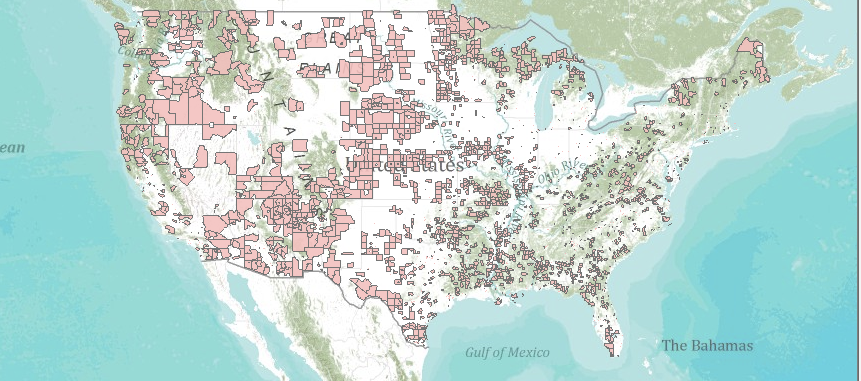
The pink box-like areas are considered food deserts. From the USDA (emphasis mine):
A food desert is a low-income census tract where either a substantial number or share of residents has low access to a supermarket or large grocery store. "Low income" tracts are defined as those where at least 20 percent of the people have income at or below the federal poverty levels for family size, or where median family income for the tract is at or below 80 percent of the surrounding area's median family income. Tracts qualify as "low access" tracts if at least 500 persons or 33 percent of their population live more than a mile from a supermarket or large grocery store (for rural census tracts, the distance is more than 10 miles). This definition was developed by a working group comprised of members from the departments of Treasury, Health and Human Services, and USDA, which is partnering to expand the availability of nutritious food.Click on above photo to get to the food desert locator.
Under these income and food access criteria, about 10 percent of the 65,000 census tracts in the United States meet the definition of a food desert. These food desert tracts contain 13.5 million people with low access to sources of healthful food. The majority of this population—82 percent—live in urban areas.




Shakesville is run as a safe space. First-time commenters: Please read Shakesville's Commenting Policy and Feminism 101 Section before commenting. We also do lots of in-thread moderation, so we ask that everyone read the entirety of any thread before commenting, to ensure compliance with any in-thread moderation. Thank you.
blog comments powered by Disqus